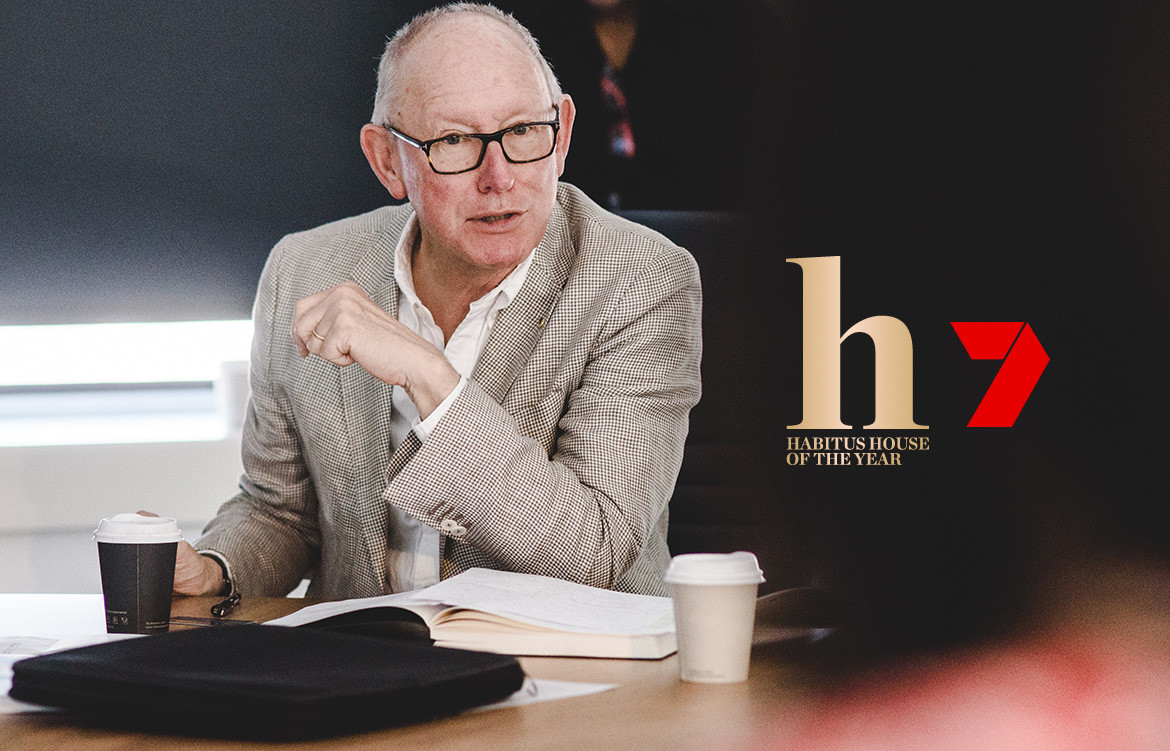In multiple decades as a practising architect, Howard Tanner built himself a reputation specialising in the residential, educational and heritage market. Since 2014 he had been operating independently from Tanner Kibble Denton Architects formerly Tanner Architects – a practice he founded in 1974 – keeping his hand in the craft by consulting with private clients and younger practices here and there. His work on residential and heritage projects often crossed over, and city and rural projects alike comprise his professional folio.
For the inaugural year of Habitus House of the Year in 2018, we were honoured to have Howard on our jury, superimposing his architectural insights and values – some shared, others unique – onto our collection of what we felt were the best current examples of residential architecture across the Indo Pacific Region.
“In Australia, New Zealand, and Singapore there are some very good designers who are responding to generally sunny climates,” he says. “We are living in places where there are generally warmish clients and we have some top architects and therefore architecture.”
In his work and the work of his contemporaries, Howard has a strong overall preference for architecture that incorporates the landscape in interesting and appropriate, ways. Any home needs its private spaces – the bedrooms, bathrooms and perhaps even a study for example – for which it’s beneficial to design in a level of separation and demarcation. It’s the public spaces throughout, such as the kitchen, lounge, and dining, where he feels architects have the opportunity to involve the surrounding landscape. In the 2018 selection Howard was most partial to the projects that did this.
A residence that feels lived in and warm is another defining factor for what Howard considers successful architecture. This can be seen in the display of a favourite painting or a sofa that’s travelled from one house to the next. While this comes from the personality of the clients, an architect does have opportunity to add to it. “When you go into a house and there’s a lovely sunny corner with magazines – and probably the cat is sitting in that corner, too – you suddenly think ‘I’d like to sit over there, too’,” says Howard by way of example. Hence answering the implicit question of whether a residence looks like it could be lived in.
“The houses we liked intrigued us in the way they worked or how they were made,” he adds. Likewise, thoughtful spatial planning, an architect’s consideration of materiality, and textural interest is immediately discernable – as is the reverse.
As a reasonable person one would be remiss to ignore the reality of personal inclinations. For Howard, his are towards a sculptural build. Beautiful fluid forms in architecture can be achieved on both large and small scales via the walls, ceilings or even the material selection. Eager for the industry to move beyond the box – “the idea that a black box will solve everything I find disappointing,” – to Howard, handsome sculptural design cues show thought and consideration for forms and spaces which as we know, rate highly on his list.
While a residence’s first and lasting impression can be cast from its look and feel, the behaviour and functionality of space is of equal importance. And in today’s political climate, that extends to its relationship with waste production and disposal, and energy sourcing and usage. So says Howard, “I’m interested in totally clean air, totally clean water and good behavior with waste.” It is imperative that architects and their clients seriously consider ways in which they can create a house that is as close to self-sustaining as possible. The best architects are those that can incorporate these sensibilities organically into the design – as opposed to tacking them on as an afterthought.
Habitus House of the Year wouldn’t exist without the support of our friends, colleagues and regular collaborators in the industry. We would like to extend our sincerest thanks to our Major Partners Gaggenau, StylecraftHOME and Zip and Supporting Partners Armadillo & Co and Earp Bros. Likewise we would like to recognise our Television Partners for joining us on our journey to a new medium.
Meet the full 2019 Habitus House of the Year jury here.

